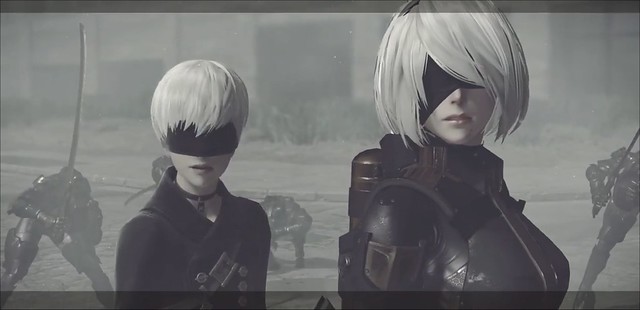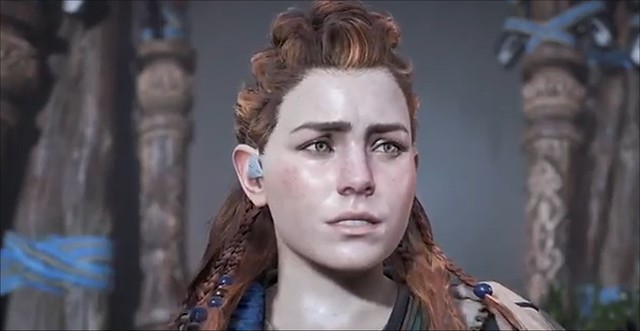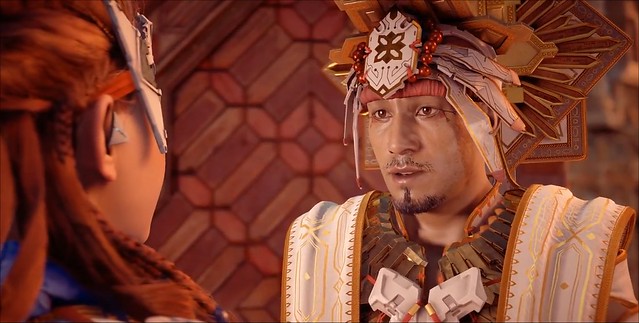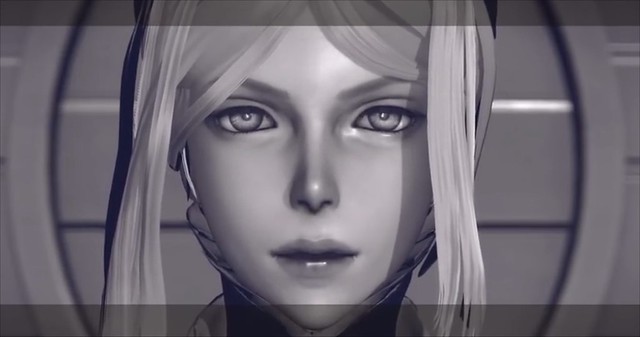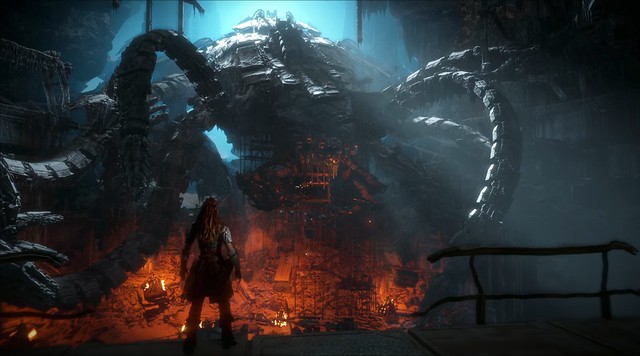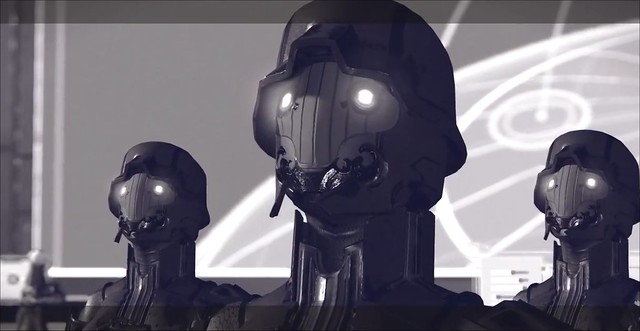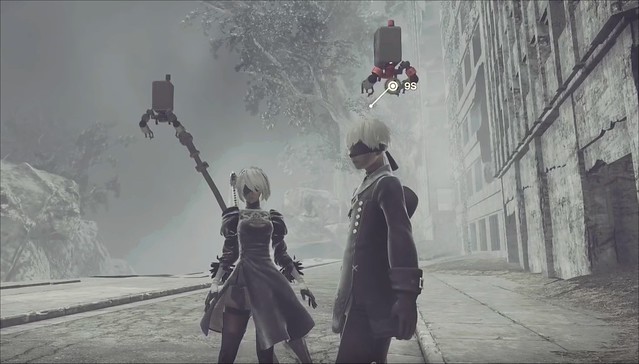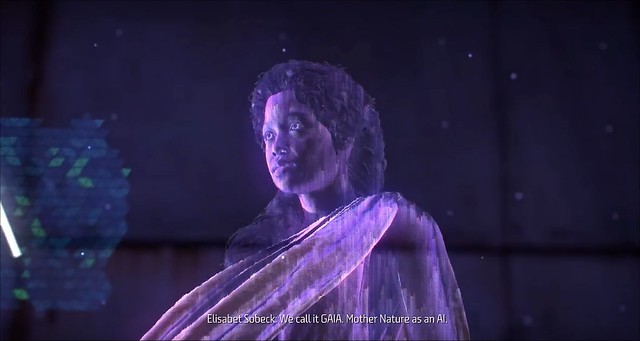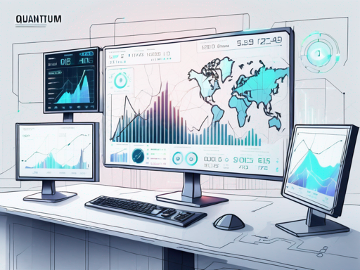[Note: While major plot points and spoilers are avoided in this article, it’s probably best to have beaten either game, or both games, to get the full scope of this article’s content.]
Nier: Automata is out in Japan, but it contains the localized English version subtitles and voiceovers. Horizon: Zero Dawn recently launched at the end of February. They both have their pros and cons, but there were some similarities between the two that really can’t be ignored.
Both games involve worlds that have been made extinct by killer machines; both games involve a rampant AI corrupting the planet; both games feature AI terraforming, and both games feature unlikely heroes trying to discover the truth behind the extinctions. The similarities between Nier: Automata and Horizon: Zero Dawn are uncanny. However, apart from the narrative themes, sandbox gameplay, machine occupation, and human extinction, the two games couldn’t be further apart in how they convey their characters, story and lore.
Nier: Automata Character Portrayals
For starters, one is about the plurality, the other is about the singularity. Nier is about getting players to think about more than just the characters you play, Horizon is about getting people to think strongly about Aloy.
In this way, the way the characters are portrayed couldn’t be more starkly antipodes.
Gamers have an instant fascination with 2B and her willing sidekick 9S. 2B is curt, prompt, professional and dangerous, exactly the way a battle unit should be. 9S, the scanner unit, is inquisitive, curious, ambitious and… somewhat frail. We definitely want to see and learn more about 2B, but she’s very closed off from the audience (and with good reason due to the way the plot eventually unfolds), 9S works as the conduit between the player and 2B, asking the questions most people might ask and making observations most people might make. This approach creates a lot of intrigue around the characters in Nier: Automata.
Horizon: Zero Dawn Character Portrayal
Aloy is the complete opposite. She does majority of the talking in Horizon, she also does all the heavy lifting in the game when it comes to discovering aspects of the world and working as the conduit between the player and Horizon’s lore. She’s portrayed as being as dangerous and proficient as the Specters from Mass Effect, but with far less experience and at half their age. Everyone in Horizon’s world also projects their admiration and adoration onto Aloy as a savior. Nary a conversation goes by where we’re not reminded that she’s there as a messiah of sorts.
The portrayal of the main characters in both games changes how players view their plight and how players connect with them. And in the case of Horizon, Aloy is portrayed as indestructible, where-as in Nier the characters are portrayed expendable.
Aloy is rarely ever in danger, and even when she does end up in a pickle, we know she’s going to get out somehow… and she does! 2B and the other characters are the complete opposite… sometimes they don’t get out. Despite the androids being some of the most technically proficient fighters in gaming history, they are oftentimes faced with impossible odds, and sometimes those odds take their toll. There is a lot of abrasive tumult going on in Nier, and it forces players to stay engaged with everything that happens to the characters from start to finish.
It’s amazing how similar both Nier: Automata and Horizon are in terms of story and themes, and yet they couldn’t be more different in execution.
Horizon’s Feminist Perspective
For example, Nier: Automata doesn’t impose its world’s values on the player. The player is an observer of the things that have happened within the fictional world cooked up by Yoko Taro; purveying the events that unfold within that world.
In Horizon: Zero Dawn, the player is the recipient of the developer’s intentions to convey the values of Aloy in how she shapes the world of Horizon.
And this is where things begin to really separate between the two games. In Horizon, Aloy is portrayed as the only one who can get things done in the world. The only people she encounters who could be considered her equal… well, she never encounters an equal in the world. Everyone is portrayed as being beneath her due to a specific plot device. This carries through in the way the missions are conveyed in Horizon and how Aloy interacts with other characters.
Majority of the people you come across in peril will be incompetent or have servile personalities. If they don’t first act subservient to Aloy, they eventually become subservient by the time a mission ends. Only one character who aids Aloy stays somewhat independent and autonomous as far as the narrative is concerned, a character named Sylens.
Some people have noted that the men in Horizon are portrayed as emasculated and weak, and it’s mostly true. The most noteworthy warriors in the game are women. The most noteworthy men in the game are bumbling sidekicks or young admirers to Aloy. The men who are leaders are portrayed as being either incompetent or useless without a female protector, like the young and handsome leader of the Carja tribe, or the interim leader of another splinter group who is literally a little boy who spends his time crying in his mother’s arms.
In this way, the feminist perspective in Horizon is one where it worships female superiority. In fact, the world is thrown asunder due to (white) male greed and ambition, and only a woman is able to save the world… three times: The first time includes wiping out the evil white man’s machines, the second time is restoring the world’s ecosystem, and the third time involves Aloy saving the planet.
Nier: Automata’s Egalitarianism
Instead of subverting its own plot for sociopolitical superiority, Nier: Automata‘s take on extinction, rampant killer robots and the ability to save the world is done in a much more honest way. This is funny because out of all the main characters there’s only one good humanoid male featured in the whole game, the android 9S. But they don’t make it a point to center on the fact that the saviors of the world are almost all female.
Throughout the journey of Nier players will encounter various other characters and robots who will need aid in one way or another, but the developers avoid needlessly making dudes and damsels in distress to convey a political message about gender superiority.
They even subvert the entire concept of gender by having a character named Pascal that talks with a female’s voice, refers to itself as “him”, and utilize feminine characteristics, all while being inside of a bulky robot’s body. There’s no lecture about sociopolitics, though; the character Pascal is a fully fleshed out character who has a story that unfolds in a way that is absolutely true to the philosophies and narrative elements portrayed throughout the game.
It’s for the above reason that a lot of Nier: Automata’s outcomes are tragic. It’s because it gets out of its own way to convey a world that doesn’t care about gender, race or religion; war and death are blind to identity politics and they make that very known throughout the game.
In this way, it’s easy to connect to the characters because their struggles rest on their abilities, not who they identify as or some hierarchical sociopolitical structure. Instead, it’s about these characters attempting to overcome the odds set against them in the face of complete annihilation.
Horizon Sacrificing Danger For Politics
And this leads to one of the most important parts about the way the political messaging is conveyed in both games. Horizon: Zero Dawn has a very obvious agenda, conveying it even at the expense of the integrity of its world’s lore.
The machines are talked about as being extremely dangerous and unforgiving. They have foreboding designs that look similar in nature to James Cameron’s portrayal of the Terminators in the first two Terminator films. However, the way the robosaurs are depicted narratively in Horizon actually belie their design. The body count is extremely small when it comes to the robosaurs killing people, and the majority of the violent deaths happen at the hands of other humans.
The game’s focus on men being these violent aggressors while women have to clean up their messes is an obvious theme that does not go unnoticed, even when it comes to the detriment of what should have been the game’s biggest threat: the robosaurs!
Even the most deadly of the machines, known as Deathbringers, are only dangerous because an evil tribesman manages to make them so. The game’s hidden lore tucked away in audio logs and notes actually explains just how dangerous the machines are supposed to be, and some of the absolutely atrocious and gruesome things they did that led to the extinction of the human race. Yet, in the actual game the machines were portrayed as being less threatening than the other human tribes.
They’re still awesomely designed and look amazing in the game, featuring some of the best animated physics for animals next to The Last Guardian, but it was obvious that they weren’t the biggest threat in Horizon’s world… men were.
Nier: Automata Puts Danger Before Politics
There’s no denying that Taro-san has a twisted sense of humor with the scenarios and characters he comes up with. It was also obvious that the artists seemed to have a field day with some of the goofy robot designs and characters in Nier: Automata. However, the sometimes odd designs didn’t detract from just how deadly and dangerous the machines were portrayed in the game.
Mutilation, limb loss, cannibalism and overt violence were the core foundations that permeated the behavior of the machines in Nier: Automata. 2B and the other androids were constantly on guard against the machines, and despite 2B being a proficient combat droid, she still maintained some element of caution when dealing with these deadly foes. In fact, throughout the game both 2B and 9S remind each other not to let their guard down around the machines.
Throughout Nier: Automata, the threat of the machine horde swelled as the game progressed. They became more violent, and the protagonists were put in more danger, thus the tension raised to peak levels by the time the final boss battle took place. What they never did, however, was strip away from how dangerous the machines could be. No matter what humans had done in the past, Nier: Automata‘s focus was on the immediate dangers of the present.
While the game starts kind of slow and the machines may seem kind of goofy at times, their autonomous rampancy shines through frequently as the game progresses; it eventually becomes easy to see how they could wipe out the humans. The developers don’t attempt to detract from the dangers they created in the game in order to push a specific political ideology.
Caring About Characters Over Politics
By the time both games ended, it was obvious which characters pulled at the heartstrings more. Yes, Nier: Automata was obviously the more fantastical game with its odd line-up of characters such as Adam and Eve, the fetish-dressed androids and the comical side characters like Emil… but that comedy didn’t stand in the way of telling a compelling story that pulled absolutely zero punches.
The mental anguish the characters suffered in Nier: Automata was heartbreaking and understandable, and the impossible decisions they had to make with dire outcomes on all sides was something that made characters like 2B, 9S and A2 the kind of characters you rooted for from start to finish. Their strength was conveyed through their abilities, skills and combat prowess, not because everyone had to tell them that they were strong or because of their assigned gender. The characters nor their abilities were ever purposefully undermined in order to push a specific political agenda, and for that they were able tell a consistent but despondent story from start to finish.
The story of Nier: Automata resonates strongly well after the credits roll for the fourth or fifth time simply due to the fact that it’s hard not to root for those characters. You want them to win, to succeed, to live; especially after everything they go through.
Caring About Politics Over Characters
In the case of Horizon: Zero Dawn, it was hard to find oneself rooting for Aloy since there was never a time throughout the story where she wasn’t capable of completing a task or couldn’t overcome the odds. Her struggles were about as prevalent and as difficult for her as they were for Rey in Star Wars: Episode VII.
Even when you compare Aloy to other characters like Venom Snake from Metal Gear Solid V: The Phantom Pain, Lara Croft from the Tomb Raider reboot, Nathan Drake from Uncharted, Ezio from Assassin’s Creed, Samus from Metroid Prime, Niko from GTA IV, or Takkar from Far Cry: Primal, she doesn’t go through anywhere near the same kind of hardships or ordeals that they go through, nor does she have any particular difficulty in her journey. Granted, a lot of the difficulty from the gameplay perspective would be determined by player-skill, and they did a great job of offering players a lot of versatility in play-styles for combat and exploration.
Even still. it’s hard to feel much for a character when her journey was essentially mothering other less capable characters and simply becoming more powerful than everyone in the land. Heck, even the player-created character from Dragon Ball Xenoverse 2 suffered far more setbacks and near-death experiences than Aloy did, and they were a super-powered being!
By the time the credits rolled and Aloy was receiving more praise for being strong, independent and caring, it was hard to feel anything for the character. The sociopolitical narrative and character dialogue throughout the entire game had been telling us all along that Aloy was strong and unstoppable. And lo and behold, she was strong and unstoppable.
This doesn’t detract from Horizon: Zero Dawn’s great lighting system, amazing movement animations, robosaur physics and combat mechanics, but it does speak volumes about how the overall world was affected by the politics permeating throughout the game.
Ultimately, it will be interesting to see how gamers react to and embrace Aloy in years to come compared to how they’ll react to and embrace 2B.
